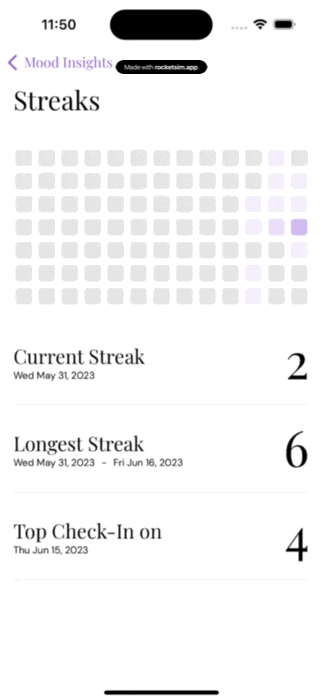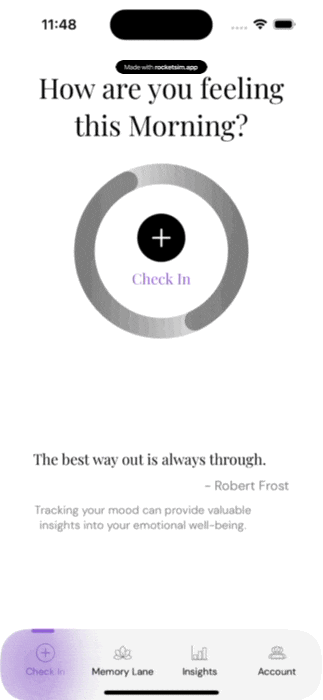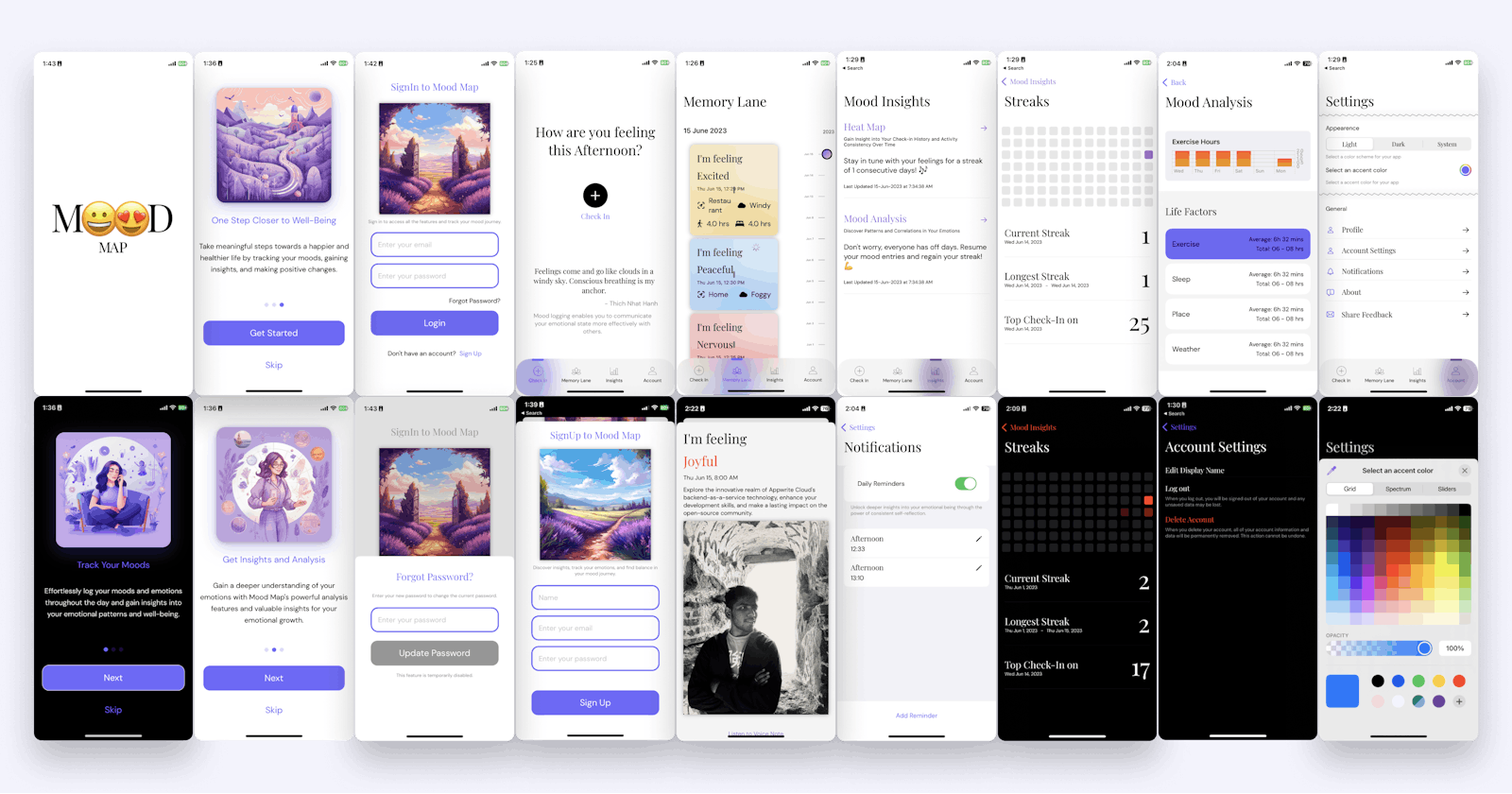Project Name: Mood Map
Team Member: Ranga Reddy
Description:
Introduction:
Welcome to the immersive world of Mood Map, an app designed to help you explore and understand your emotions like never before. In this article, we will dive into the concept, motivation, and core features of Mood Map, as we embark on a journey of emotional self-discovery. Join us as we navigate the depths of human emotions and unveil the power of Mood Map.
Unveiling the Concept:
Mood Map is not just another app; it is a powerful tool that allows users to track, preserve, and gain insights into their emotions. The concept revolves around the understanding that emotions play a crucial role in our lives, and yet, many struggle to comprehend and manage them effectively. Mood Map addresses this challenge by providing a unique and intuitive way to capture, analyze, and reflect upon our daily emotional experiences.
Motivation and Problem Statement:
The motivation behind Mood Map stems from a deep-rooted desire to empower individuals to navigate their emotional landscapes with confidence and self-awareness. We recognized that many people struggle with understanding and expressing their emotions, which can have a significant impact on their overall well-being. I too felt low for various reasons, which turned out to be a blessing in disguise. These experiences prompted me to build Mood Map, as I realized the importance of understanding and managing our emotions.
Through my own emotional journey, I became passionate about creating a tool that could bridge the gap in emotional understanding and expression. I wanted to provide a platform that encourages emotional exploration and facilitates personal growth. Mood Map is the result of my personal experiences and the desire to empower others to navigate their emotional landscapes with confidence and self-awareness.
By using Mood Map, individuals can capture, analyze, and reflect upon their emotions, gaining valuable insights into their emotional patterns. This self-awareness enables users to make informed decisions, take proactive steps to manage their emotions, and enhance their overall well-being. Mood Map is not just an app; it is a transformative tool that fosters personal growth and empowers individuals to embrace and understand their emotions.
Key Features and Benefits:
Scheduled Mood Entries: Mood Map allows users to schedule and record their emotions at specific times throughout the day. This feature encourages regular emotional check-ins, enabling users to become more aware of their feelings and gain valuable insights into their emotional patterns.

Image and Voice Notes: Understanding that emotions are often complex and difficult to express solely through words, Mood Map enables users to attach images and voice notes to each mood entry. By capturing visual and auditory elements, users can create a more comprehensive and multi-dimensional representation of their emotions.
Mood Insights: One of the most powerful aspects of Mood Map is its ability to provide valuable insights into emotional patterns over time. By analyzing the recorded mood entries, the app generates personalized visualizations and summaries, uncovering trends and correlations that can lead to greater self-awareness and personal growth.
User-Friendly Interface: Mood Map boasts a user-friendly interface, designed to make the emotional exploration process intuitive and enjoyable. The app's clean design and seamless navigation ensure a delightful user experience, allowing individuals to focus on their emotional journey without any unnecessary distractions.
Emotional Well-being: By encouraging regular emotional check-ins and providing insights into emotional patterns, Mood Map empowers users to gain a deeper understanding of their emotional well-being. This self-awareness enables individuals to make informed decisions, take proactive steps to manage their emotions, and ultimately enhance their overall emotional health.
Overall, Mood Map is not just an app; it is a gateway to self-discovery, emotional growth, and overall well-being. By addressing the struggles many individuals face in understanding and expressing their emotions, Mood Map empowers users to navigate their emotional landscapes with confidence and self-awareness.
Now it's time to explore the development process, Appwrite backend integration, user feedback iterations, and deployment!
Tech Stack
- SwiftUI
- Appwrite Cloud
- Authentication
- Database
- Cloud Functions - Python
- Storage
As I embarked on the development of Mood Map for a hackathon, I had to choose a specific framework for the application. Although I was experienced in Native iOS and Flutter, I found limited resources discussing the integration of Appwrite backend features specifically for iOS. Despite the lack of open resources, I decided to choose iOS because I wanted to challenge myself and give my best effort.
Crafting the User Interface:
Before diving into the implementation, I began the design process by creating wireframes for the Mood Map app. Wireframes served as the blueprint for the user interface, outlining the layout, navigation, and interactive elements. They provided a visual representation of how users would interact with the app, allowing me to iterate and refine the design before starting the development process.

User interface design played a crucial role in Mood Map, aligning with emotions and offering personalization. Carefully chosen colours, typography, and a clean design enhance the emotional journey. Users can personalize with accent colours and light/dark themes. I am grateful for the guidance and expertise of my talented designer friend, Anuja, whose insights and contributions elevated the app's visual appeal and user experience.
Implementation of Core Features:
The core features of Mood Map were at the heart of the application, enabling users to effectively track and preserve their emotions. I meticulously planned and developed these features. From capturing scheduled mood entries to attaching image and voice notes, every aspect was carefully coded to ensure a seamless and intuitive user experience. I leveraged the capabilities of iOS framework, AVFoundation for audio recording and playback. My goal was to create a feature-rich app that remained user-friendly and accessible to all.
Animations in Mood Map are purposefully crafted to enhance the user experience and bring emotions to life. From smooth transitions to personalized color palettes, our animations create an immersive journey of emotional exploration.
Here are a few different tabs of the app with Animations




Technical Challenges and Solutions:
Throughout the development process, I encountered various technical challenges that required innovative solutions. One of the challenges I faced was retrieving user-specific insights through cloud functions, which proved to be both challenging and interesting. As a full-time Python developer, I used the Python SDK to pull user data and perform operations to gain insights. I employed efficient data storage and retrieval techniques, leveraging database capabilities for managing mood entries and media storage. Additionally, I optimized image and voice note processing to ensure smooth and responsive user interactions.
As the application was developed in SwiftUI, I have to make a few adaptations to ensure its compatibility with iPadOS before releasing it.
The development of Mood Map for iOS has been an exhilarating journey of creativity, problem-solving, and technical innovation. Starting with wireframes, I meticulously designed the user interface to create a visually appealing and engaging experience. Despite the challenges I faced in finding specific resources and ensuring compatibility across devices, I successfully brought the concept of Mood Map to life.
Open Source Links
Mood Map App: https://github.com/irangareddy/Mood-Map
Mood Map Kit: Cloud Functions: https://github.com/irangareddy/mood-map-kit/
Demo
Onboarding: https://youtube.com/shorts/SE1TDOJVas8
Auth Flow: https://youtube.com/shorts/TGV7Hv-b7ws
User Flow: https://youtu.be/DLtKC9jG9Ws
Listen to voice note: https://youtube.com/shorts/vwxlqGGZ7Aw
Image and audio recording feature: https://youtube.com/shorts/17zrEY-pDbA
Settings: https://youtu.be/s6lW6nt0fwU

